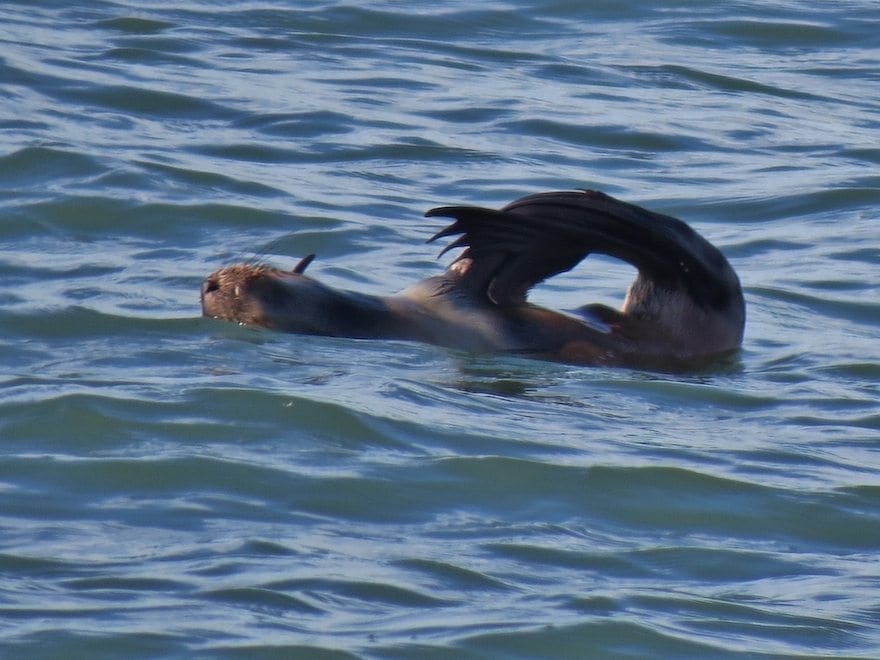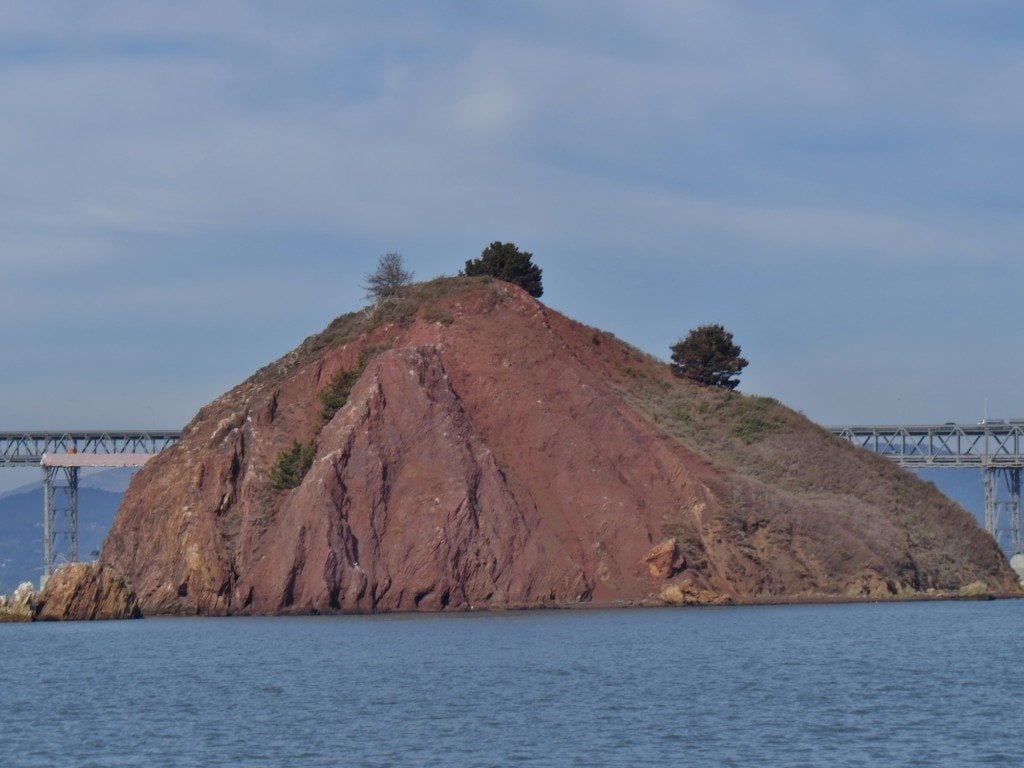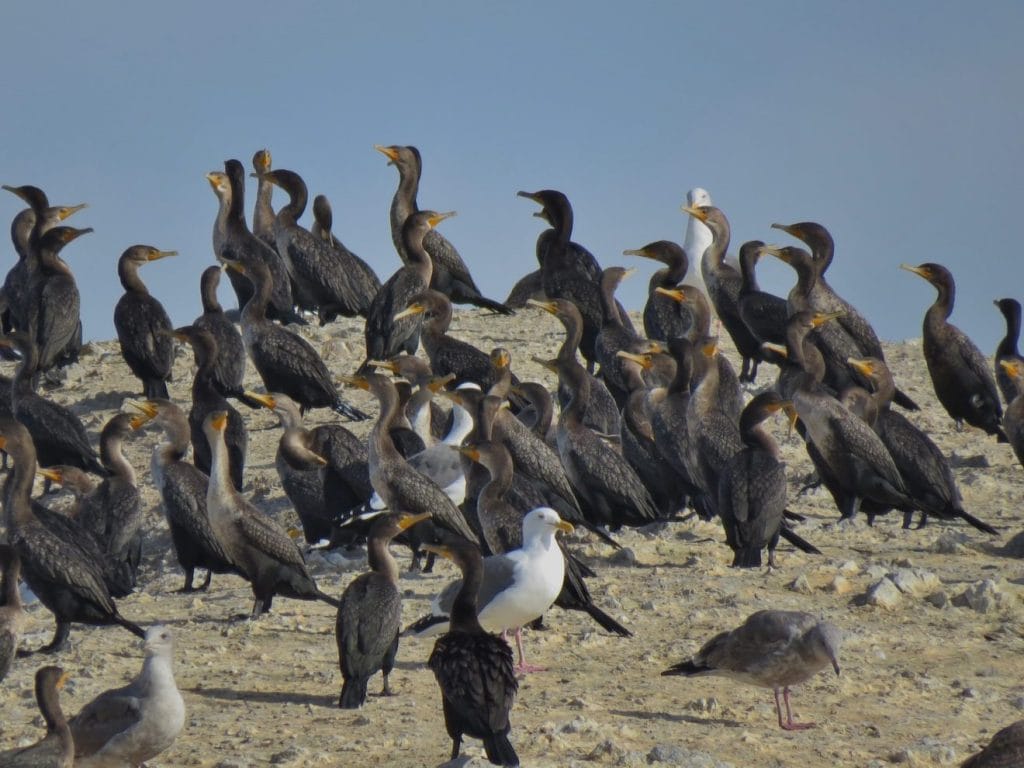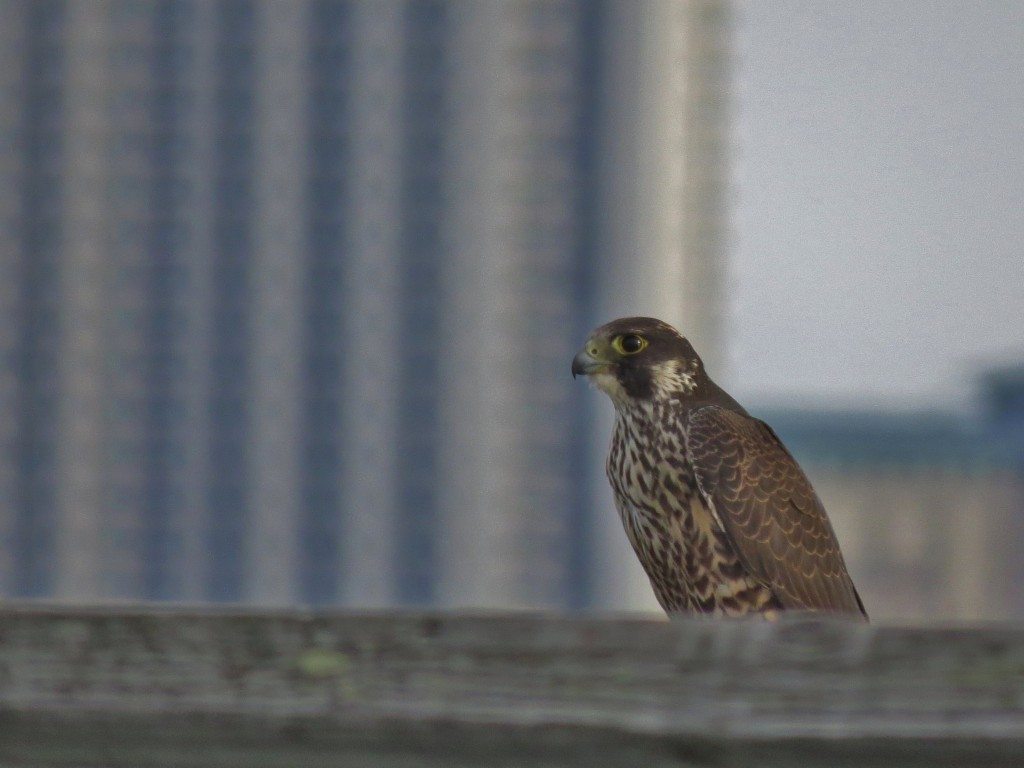GGBA birds the Bay with Dolphin Charters
By David Assmann
At 8:45 a.m. on Saturday November 21st, 29 enthusiastic birders boarded the double-decker River Dolphin at the Berkeley Marina for a full day of birding on San Francisco Bay with Golden Gate Bird Alliance and Dolphin Charters. It was sunny, and the Bay was flat without any whitecaps.
Heading out of the dock, we got good looks at a number of Black Oystercatchers and a Black Turnstone. Shortly after leaving the dock, a Black Scoter flew in front of the boat, a harbinger of the day’s potential. While we saw hundreds of Surf Scoters on the trip, seeing a Black Scoter in the Bay is always special, since this winter resident sea duck is normally found in the Pacific Ocean.
Much more amazing than the Black Scoter was our second notable sighting of the day – not a bird, but a Northern Fur Seal, floating a little more than a mile from shore. It was in a classic fur seal jug handle pose – the hindflippers resting on top of a foreflipper out of the water. This apparently healthy young seal was miles away from its usual habitat. Northern Fur Seals are normally strictly pelagic, and only use a few offshore islands, like the Farallon Islands, for breeding and pupping.

Northern Fur Seals were common before the arrival of Europeans on the West Coast. In the middens at the Emeryville Shell Mounds, small numbers of fur seal bones have been found dating to between 700 BC and 1300 AD. However, fur seals were coveted by Europeans for their fur, and they were almost totally wiped out by hunters in the late 1800s off the coast of California.
A small population was discovered in 1968 on San Miguel Island (the westernmost of the Channel Islands). A few of those seals made their way to the Farallones and in 1996, for the first time in more than a century, a fur seal was born on the Farallones. Since then, this population has increased to more than 1,000 seals. However, despite being protected, fur seal populations are still declining worldwide, and the species is listed as vulnerable under the Endangered Species Act.
After taking long looks at the Northern Fur Seal (allowing photographers to take multiple pictures), the River Dolphin slowly made its way north along the east side of the San Francisco Bay. Ducks were abundant, including many Greater and Lesser Scaups, Buffleheads, Ruddy Ducks and Surf Scoters. Cormorants (mostly Double-Crested), Eared and Horned Grebes, and Brown Pelicans were also common.
Exploring the Richmond Inner Harbor we were able to spot Ospreys sitting on a number of poles, as well as a few shorebirds and seven species of gulls (Western, Glaucous-Winged, Mew, Heerman’s, Ring-Billed, Herring and California). The boat made its way past Brooks Island, a 373-acre reserve owned by the East Bay Regional Parks District. Caspian Terns and Black-Crowned Night Herons nest there, although we didn’t see either species there on this trip.
Heading towards the Richmond-San Rafael Bridge, we passed close by Red Rock, a 5.8 acre, privately-owned island, currently available to any buyer willing to pay $5 million for the island. Once mined for manganese, it is the only privately-owned island in the San Francisco Bay. As the boat passed by, a Say’s Phoebe was flycatching from one of the few trees on the island.

After passing under the Richmond-San Rafael Bridge, we could hear the foghorn on East Brother Island, which was being demonstrated for guests at the East Brother Light Station. This is a Victorian Bed and Breakfast on the island in the strait that separates the San Francisco Bay from the San Pablo Bay. This pricy (up to $415 a night) bed and breakfast is a unique place to experience the Bay. While we couldn’t see any birds on East Brother Island, which is mainly taken up by the Bed and Breakfast, West Brother Island, immediately to the west, was covered with Cormorants and Gulls.


After leaving the Brother Islands, the boat headed back under the San Rafael Bridge and past San Quentin Prison. We had close-up looks at an Osprey, and found a number of ducks close to shore, including two Eurasian Wigeons in with a number of American Wigeons. Heading up Corte Madera Creek we spotted American Avocets, Black-Necked Stilts, Long Billed Curlews, Black-Bellied Plovers, Least Sandpipers, Snowy and Great Egrets, a Belted Kingfisher, a Black-Crowned Night Heron, and a Spotted Sandpiper.
Continuing south towards Tiburon, we had another avian highlight – a Black Tern! It was spotted flying north, close to an Elegant Tern. Then as we headed towards Angel Island, Sharon Jue photographed a Brown Booby!

The River Dolphin passed Angel Island, and then Alcatraz Island, before checking the northernmost piers in San Francisco for birds. Travelling east, we got great looks at Harbor Seals and the lighthouse on Yerba Buena Island. Heading back to Berkeley, we sailed under the Bay Bridge and got one more avian highlight before the trip ended – a Peregrine Falcon on the Berkeley Pier.
The final bird tally — 55 species. Thanks to the expertise of Barbara Fitzgerald, the knowledgeable Dolphin Charters guide, all participants also learned a lot about the history, geology, buildings and other interesting features of the Bay on the trip. It was truly a magical day.


NOTE: Golden Gate Bird Alliance will sponsor three river and delta birding trips with Dolphin Charters in spring 2016. Check our Field Trips web page in January for details and registration.
——————————-
David Assmann is the former Deputy Director of the San Francisco Department of the Environment. Since he retired last year, he has been able to devote more time to birding and photography. He leads the Golden Gate Bird Alliance field trip at Fort Mason on the third Sunday of every month.
